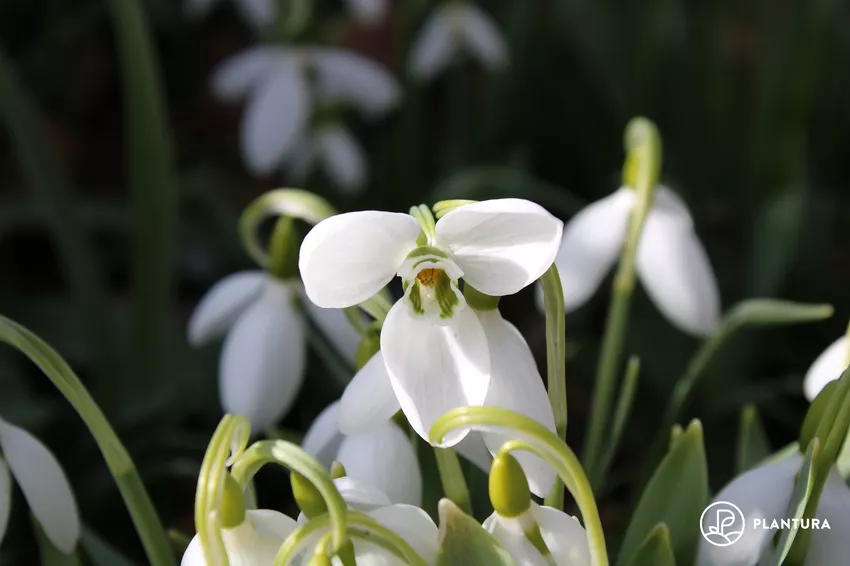Snowdrops are the first garden messengers of the new year. But you often hear that they are poisonous - is that true or are they harmless?

Snowdrops (Galanthus) sprout in heaps from meadows or beds in late winter. You can see them breaking through the still cold ground in sparse forests or in city parks. It can happen, especially with children, that small hands free the blossoms from their stem and end up in a mouth that explores the world. But is that little bit of a flower really bad when you consider what else small children put in their mouths?
Are snowdrops poisonous?
Snowdrops belong in the garden, but certainly not in the mouth. Because as representatives of the Narcissus family (Amaryllidaceae), all parts of the plant contain toxic Amaryllidaceae alkaloids. These serve the natural protection of the plant against parasite infestation and grazing herbivores. The onion in particular has it all. The other plant components include tazettin, galanthamine and lycorine. The plant sap is irritating to the skin. When planting the bulb or other contact with snowdrops, wear gloves and avoid touching your face with them.
Note: The plant is also poisonous for your four-legged friends at home.
Poisoning with snowdrops
If poisoned with snowdrops, the typical symptoms of poisoning appear. You should pay attention to these after accidental consumption. After eating small amounts, there is increased salivation, abdominal pain, nausea, vomiting and diarrhea. The consumption of larger amounts also leads to circulatory disorders with sweating and drowsiness. You should definitely see a doctor to be on the safe side. If you have nibbled under three onions, a liquid (tea, water) and someone at home to look after you is enough.

Snowdrop as a remedy
As with all things, snowdrops depend on the dosethe poison. In the Caucasus, the bulb of the local snowdrop (Galanthus woronowii) has long been eaten by old people against signs of aging and poor memory. Modern medicine takes advantage of this effect in dementia medication. In addition, certain ingredients relieve polio and neuralgia. Nevertheless, please do not eat snowdrops.
For more information on snowdrops - on varieties, plants and propagation - see our review article.